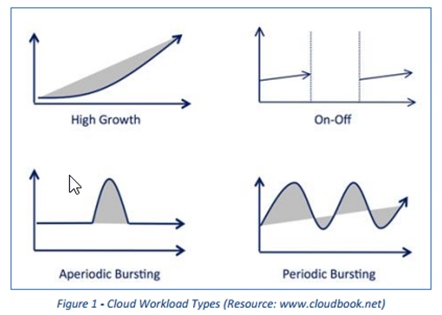5 Key Essentials of Cloud Workloads Migration
 The benefits of migrating workloads between different cloud providers or between private and public clouds can only truly be redeemed with an understanding of the cloud business model and cloud workload management. It seems that cloud adoption has reached the phase where advanced cloud users are creating their own hybrid solutions or migrating between clouds while striving to achieve interoperability values within their systems. This article aims to answer some of the questions that arise when managing cloud workloads.
The benefits of migrating workloads between different cloud providers or between private and public clouds can only truly be redeemed with an understanding of the cloud business model and cloud workload management. It seems that cloud adoption has reached the phase where advanced cloud users are creating their own hybrid solutions or migrating between clouds while striving to achieve interoperability values within their systems. This article aims to answer some of the questions that arise when managing cloud workloads.
 Over the last year I had endless conversations with companies that strive to adopt the cloud – specifically the Amazon cloud. Of those I met, I can say that ClickSoftware is one of the leading traditional ISVs that managed to adopt the cloud. The Amazon cloud is with no doubt the most advanced cloud computing facility, leading the market. In my previous job I was involved in the ClickSoftware cloud initiative, from decision making with regards to Amazon cloud all the way to taking the initial steps to educate and support the company’s different parties in providing an On-Demand SaaS offering.
Over the last year I had endless conversations with companies that strive to adopt the cloud – specifically the Amazon cloud. Of those I met, I can say that ClickSoftware is one of the leading traditional ISVs that managed to adopt the cloud. The Amazon cloud is with no doubt the most advanced cloud computing facility, leading the market. In my previous job I was involved in the ClickSoftware cloud initiative, from decision making with regards to Amazon cloud all the way to taking the initial steps to educate and support the company’s different parties in providing an On-Demand SaaS offering. Every day I talk, write and comment about the “Cloud”. Every time I mention the cloud I try to make sure that I add the name of the relevant cloud operator, “Rackspace Cloud, “MS Cloud” (Azure) or “HP Cloud”. Somehow all of these cloud titles don’t right to me – it seems the only title that really works for me is the “Amazon Cloud”. In this post, I will elaborate about the competition in the IaaS market and I will explain further why I think this is so.
Every day I talk, write and comment about the “Cloud”. Every time I mention the cloud I try to make sure that I add the name of the relevant cloud operator, “Rackspace Cloud, “MS Cloud” (Azure) or “HP Cloud”. Somehow all of these cloud titles don’t right to me – it seems the only title that really works for me is the “Amazon Cloud”. In this post, I will elaborate about the competition in the IaaS market and I will explain further why I think this is so.